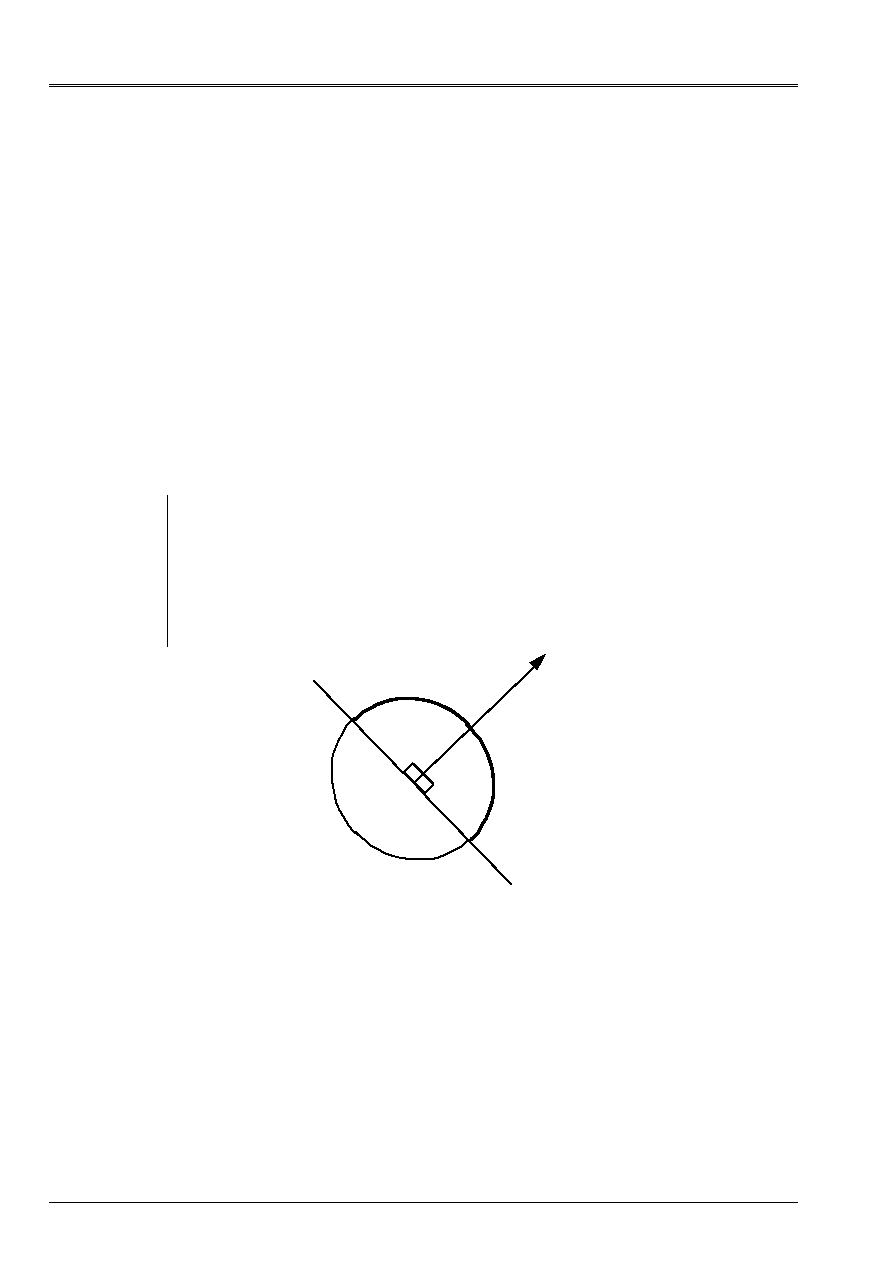
Code_Aster
®
Version
8.2
Titrate:
Operator
DEFI_GROUP
Date:
31/01/06
Author (S):
J. PELLET
Key
:
U4.22.01-H1
Page:
1/18
Instruction manual
U4.2- booklet: Mesh
HT-62/06/004/A
Organization (S):
EDF-R & D/AMA
Instruction manual
U4.2- booklet: Mesh
Document: U4.22.01
Operator
DEFI_GROUP
1 Goal
To define in an existing mesh, new groups of nodes or meshs. This can facilitate
definition of new loci for inputs or postprocessings.
To create new groups, one uses topological, logical or geometrical criteria.
Modify a structure of data of the mesh type or skeleton.

Code_Aster
®
Version
8.2
Titrate:
Operator
DEFI_GROUP
Date:
31/01/06
Author (S):
J. PELLET
Key
:
U4.22.01-H1
Page:
2/18
Instruction manual
U4.2- booklet: Mesh
HT-62/06/004/A
2 Syntax
my (mesh) =
DEFI_GROUP
(
reuse = my,
MESH
= my
,
/
[mesh]
/
[skeleton]
| DETR_GROUP_MA = _F (
NAME
=
lgma),
[l_group_ma]
| DETR_GROUP_NO = _F (
NAME
=
lgno),
[l_group_no]
| CREA_GROUP_MA = (_F (
NAME
=
gma
,
[identifier]
/
NET
=
lmail
,
[l_maille]
/
ALL
=
“YES”,
/
INTERSEC
=
lgma,
[l_group_ma]
/
UNION
=
lgma,
[l_group_ma]
/
DIFFE
=
lgma,
[l_group_ma]
/
GROUP_MA = gma
,
[group_ma]
/
NUME_INIT
=/nuini, [I]
/
1
,
[DEFECT]
NUME_FIN
=
nufin
,
[I]
/
POSITION =/“INIT”,
/
“FINE”
,
/
“MEDIUM”
,
/
OPTION
= “FACE_NORMALE”,
/
ANGL_NAUT = (
,
),
[l_R]
/
VECT_NORMALE= (X, y, Z)
, [l_R]
ANGL_PREC =
/
,
[R]
/
0.5,
[DEFECT]
VERI_SIGNE
=
/
“NOT”,
/
“YES”
,
[DEFECT]
/
OPTION
= “SPHERE”
,
/
NOT = (X, y, Z),
[l_R]
/
NOEUD_CENTER
=
No,
[node]
/
GROUP_NO_CENTER = grno,
[group_no]
RADIUS
=
R, [R]
/
OPTION
= “CYLINDER”
,
/
NOT = (X, y, Z),
[l_R]
/
NOEUD_CENTER
=
No,
[node]
/
GROUP_NO_CENTER = grno,
[group_no]
RADIUS
=
R, [R]
/ANGL_NAUT = (
,
), [l_R]
/
VECT_NORMALE=
(X,
y,
Z),
[l_R]

Code_Aster
®
Version
8.2
Titrate:
Operator
DEFI_GROUP
Date:
31/01/06
Author (S):
J. PELLET
Key
:
U4.22.01-H1
Page:
3/18
Instruction manual
U4.2- booklet: Mesh
HT-62/06/004/A
/
OPTION
= “TAPE”
,
/
NOT = (X, y, Z),
[l_R]
/
NOEUD_CENTER
=
No,
[node]
/
GROUP_NO_CENTER = grno,
[group_no]
/
ANGL_NAUT = (
,
), [l_R]
/
VECT_NORMALE= (X, y, Z),
[l_R]
DIST
=
D,
[R]
/
OPTION
= “APPUI_LACHE”
,
/
GROUP_NO
=
lgno
,
[l_group_no]
/
NODE
=
lno,
[l_noeud]
),),
|
CREA_GROUP_NO
=
(_F (
/
NAME
=
gno
,
[identifier]
/
NODE
=
lnoeu
,
[l_noeud]
/
INTERSEC = lgno, [l_group_no]
/
UNION
=
lgno,
[l_group_no]
/
DIFFE
=
lgno,
[l_group_no]
/
GROUP_NO = gno
,
[group_no]
/
NUME_INIT
=/nuini, [I]
/
1
,
[DEFECT]
NUME_FIN
=
nufin
,
[I]
/
POSITION =/“INIT”
,
/
“FINE”
,
/
“MEDIUM”
,
/
OPTION
=
“ENV_SPHERE”
,
/NOT = (X, y, Z),
[l_R]
/
NOEUD_CENTER = No,
[node]
/
GROUP_NO_CENTER = grno,
[group_no]
RADIUS
=
R, [R]
PRECISION
=
eps
,
[R]
/
OPTION
=
“ENV_CYLINDRE”
,
/NOT = (X, y, Z),
[l_R]
/
NOEUD_CENTER = No,
[node]
/
GROUP_NO_CENTER = grno,
[group_no]
RADIUS
=
R, [R]
/ANGL_NAUT = (
,
),
[l_R]
/
VECT_NORMALE= (X,
y,
Z),
[l_R]
PRECISION = eps, [R]
/
OPTION
=
“PLANE”
,
/NOT = (X, y, Z),
[l_R]
/
NOEUD_CENTER = No,
[node]
/
GROUP_NO_CENTER = grno,
[group_no]
/ANGL_NAUT = (
,
),
[l_R]
/
VECT_NORMALE= (X,
y,
Z),
[l_R]
PRECISION = eps, [R]

Code_Aster
®
Version
8.2
Titrate:
Operator
DEFI_GROUP
Date:
31/01/06
Author (S):
J. PELLET
Key
:
U4.22.01-H1
Page:
4/18
Instruction manual
U4.2- booklet: Mesh
HT-62/06/004/A
/
OPTION
=
“SEGM_DROI_ORDO”
,
/NODE = lno,
[l_noeud]
/
GROUP_NO
=
gno2
,
[group_no]
/NOEUD_ORIG = noA,
[node]
/
GROUP_NO_ORIG=
gnoA
,
[group_no]
/NOEUD_EXTR = noB,
[node]
/
GROUP_NO_EXTR=
gnoB
,
[group_no]
PRECISION
=
prec,
[R]
CRITERION =/“RELATIVE”,
/
“ABSOLUTE”,
/
OPTION
=
“NOEUD_ORDO”
,
GROUP_MA
= gmaAB
,
[group_ma]
/NOEUD_ORIG = noA,
[node]
/
GROUP_NO_ORIG=
gnoA
,
[group_no]
/NOEUD_EXTR = noB,
[node]
/
GROUP_NO_EXTR=
gnoB
,
[group_no]
/
OPTION
=
“TUNNEL”
,
/ALL = “YES”
/ | GROUP_MA = lgma,
[l_group_ma]
| NET = lmai,
[l_maille]
/MAILLE_AXE = noA,
[l_maille]
/
GROUP_MA_AXE
=
gnoA
,
[l_group_ma]
/NOEUD_ORIG = noA,
[node]
/
GROUP_NO_ORIG=
gnoA
,
[group_no]
RADIUS = R,
[R]
LENGTH = long,
[R]
/
GROUP_MA
=
lgma,
[l_identificator]
NAME = lgno,
[l_group_no]
CRIT_NOEUD =/“ALL”,
[DEFECT]
/
“SUMMIT”
,
/
“MEDIUM”
,
/
“CENTER”
,
/
TOUT_GROUP_MA
:
“YES”
,
),),
ALARM
=
/
“YES”,
[DEFECT]
/
“NOT”,
INFORMATION =/1,
/2,
)
Type of the result:
If
MESH
: mesh
then
:
mesh
:
skeleton
skeleton

Code_Aster
®
Version
8.2
Titrate:
Operator
DEFI_GROUP
Date:
31/01/06
Author (S):
J. PELLET
Key
:
U4.22.01-H1
Page:
5/18
Instruction manual
U4.2- booklet: Mesh
HT-62/06/004/A
3 Operands
3.1
General information on the operands
This control in the same way treats the concepts of the mesh type or skeleton. In
continuation one will use the vocabulary “mesh”.
This control makes it possible to define new groups of meshs (or groups of nodes) in one
existing mesh: the mesh is enriched
my
.
The definition of a new group can be done in several ways:
·
in extension: key words
NET
or
NODE
,
·
by Boolean operation on existing groups: intersection (
INTERSEC
), meeting
(
UNION
) or difference (
DIFFE
),
·
according to a geometrical criterion: meshs whose node belongs to a given sphere,…
·
for the groups of nodes, by referring to existing groups of meshs.
group nodes thus definite contains all the nodes of the meshs of the group of meshs
origin (key words
TOUT_GROUP_MA
and
GROUP_MA
).
The operator treats initially the key word
CREA_GROUP_MA
so that one can make use of the groups of
meshs thus defined in the key word
CREA_GROUP_NO.
With each occurrence of a key word
CREA_GROUP_MA
(
_NO
)
one defines a new group named (word
key
NAME
). This new group can then be re-used in the following occurrences to define
new groups by intersection, meeting,…
Key words DETR_GROUP_MA and DETR_GROUP_NO make it possible “to destroy” groups of meshs
or of nodes. The meshs and the nodes of these groups are not removed, they are only them
definitions of the groups which are unobtrusive. These key words are useful for example in the loops
python when one wants to create a group with each iteration of the loop: one starts by destroying
this group then one recreates it under the same name. That avoids changing name of group with each
iteration.
3.2 Operand
MESH
MESH = my
my
is the name of the mesh which one wants “to enrich”.
3.3 Words
keys
DETR_GROUP_MA and DETR_GROUP_NO
These two key words factor make it possible to remove the definition of groups of meshs or nodes.
These key words are sometimes necessary because the code stops in fatal error if one tries to create one
group whose name is already used. It is necessary to destroy the group before being able to re-use its name.
behavior of the two key words is similar and we will speak here only about DETR_GROUP_MA.
Syntax:
DETR_GROUP_MA=_F (NOM= (GM1, GM2,…)),
The key word factor DETR_GROUP_MA is a priori répétable but it is never necessary because the word
key NAME makes it possible to indicate a list of names of groups to be destroyed (gm1, gm2,…).

Code_Aster
®
Version
8.2
Titrate:
Operator
DEFI_GROUP
Date:
31/01/06
Author (S):
J. PELLET
Key
:
U4.22.01-H1
Page:
6/18
Instruction manual
U4.2- booklet: Mesh
HT-62/06/004/A
It is important to know that all the occurrences of key word DETR_GROUP_MA are treated front
those of key word CREA_GROUP_NO because the objective of this key word is to be able to re-use the destroyed name. It
is also necessary to know that the destruction of a non-existent group does not involve any message of alarm.
These choices make it possible for example to make in a loop python:
for I in arranges (N):
DEFI_GROUPE (reuse=MA, MAILLAGE=MA,
DETR_GROUP_MA=_F (NAME (“GM1”,),
CREA_GROUP_MA=_F (NOM=' GM1',…
At the time of the first iteration, group “GM1” does not exist, one requires his destruction but any
message of alarm is not transmitted.
Note:
As the destruction takes place at the beginning of the control, it is impossible to modify one
group by calling only one upon DEFI_GROUP. For example, one cannot make “grow bigger”
(in a loop) a group by adding a small group (b1) to him:
for I in arranges (N):
b1=nouveau group…
DEFI_GROUP (reuse=MA, MAILLAGE=MA,
CREA_GROUP_MA=_F (NOM=' tout', UNION= (“all”, “b1”),),)
To do that, DEFI_GROUP should be invited twice:
for I in arranges (N):
b1=nouveau group…
DEFI_GROUP (reuse=MA, MAILLAGE=MA,
DETR_GROUP_MA=_F (NOM=' TOUT2'),
CREA_GROUP_MA=_F (NOM=' tout2', UNION= (“all”, “b1”),),)
DEFI_GROUP (reuse=MA, MAILLAGE=MA,
DETR_GROUP_MA=_F (NOM=' tout'),
CREA_GROUP_MA=_F (NOM=' tout', UNION= (“tout2”, “b1”),),)
3.4 Word
key
CREA_GROUP_MA
| CREA_GROUP_MA
An occurrence of this key word factor makes it possible to define a new group of meshs.
3.4.1 Operand
NAME
NAME =
gma
One gives here the name (with “quotes”) of the new group of meshs.
3.4.2 Operand
NET
/MESH = lmail
This key word makes it possible to define the group of meshs in extension: the list of the meshs is given
the component.

Code_Aster
®
Version
8.2
Titrate:
Operator
DEFI_GROUP
Date:
31/01/06
Author (S):
J. PELLET
Key
:
U4.22.01-H1
Page:
7/18
Instruction manual
U4.2- booklet: Mesh
HT-62/06/004/A
3.4.3 Operand
ALL
/ALL = “YES”
This key word makes it possible to define a group containing all the meshs of the mesh.
3.4.4 Operand
INTERSEC
/INTERSEC = (gma1, gma2, gma3,…),
The new group of meshs will be obtained by taking all the meshs of
gma1
who
also belong to
gma2
,
gma3,…
. The command of the meshs remains that of
gma1
.
3.4.5 Operand
UNION
/
UNION
=
(
gma1
,
gma2
,
gma3
,
…
)
The new group of meshs will be obtained by taking all the meshs of
gma1
, then in
adding the meshs of
gma2
who do not belong to
gma1
, then those of
gma3
who
do not belong nor to
gma1
nor with
gma2
, etc
3.4.6 Operand
DIFFE
/DIFFE = (gma1, gma2, gma3,…)
The new group of meshs will be obtained by taking all the meshs of
gma1
who
do not belong to the other groups of the list. The command of the meshs remains that of
gma1
.
3.4.7 Sub-group of an existing group
: key words
GROUP_MA
/
POSITION
/
NUME_INIT
/
NUME_FIN
One can create a new group of mesh by selecting certain meshs of an existing group.
1
era
possibility:
One creates a group of only one mesh while specifying by the key word
POSITION
the required mesh.
Example:
CREA_GROUP_MA = _F (
GROUP_MA = G1
, POSITION = “INIT”, NAME = G1I)
The group
G1I
the 1 contains
era
net group
G1
.
2
ème
possibility:
One creates a group containing the meshs ranging between the rows
nuini
and
nufin
(included) in one
existing group.
Example:
CREA_GROUP_MA=_F (GROUP_MA = G1, NUME_INIT = 3
, NUME_FIN = 7,
NAME =
G1P)
The group
G1P
contains meshs 3, 4, 5,…, 7 of
G1
.
Caution:
These key words use the concept of command of the meshs in a group of meshs. This command is
often unknown to the user. He can depend on the preprocessor. It is the command of the meshs at the time
definition of
GROUP_MA
in the file of mesh Aster.

Code_Aster
®
Version
8.2
Titrate:
Operator
DEFI_GROUP
Date:
31/01/06
Author (S):
J. PELLET
Key
:
U4.22.01-H1
Page:
8/18
Instruction manual
U4.2- booklet: Mesh
HT-62/06/004/A
3.4.8 Operand
OPTION = “FACE_NORMALE”
/OPTION = “FACE_NORMALE”
This option makes it possible to define one
GROUP_MA
constituted of surface meshs of which the normal
is parallel to the direction of the vector defined by its components if the key word is used
VECT_NORMALE
or with that of the first vector of the new base defined by the change
of reference mark due to the nautical angles.
In 3D, one supposes that the surface meshs are plane breakages. They are of type
TRIA3
,
TRIA6
,
QUAD4
,
QUAD8
or
QUAD9
. If X is called
1
, X
2
, and X
3
the vectors position
of the first three nodes nodes of the element, the normal is determined by the product
vectorial: (X
2
X
1
)
(X
3
X
1
).
In 2D, one supposes that the surface meshs are right segments. They are of type
SEG2
or
SEG3
. If X is called
1
and X
2
the vectors position of the two nodes ends of
the element, the normal is defined by (X
2
X
1
)
Z where Z is the perpendicular unit vector
in the plan and where one has affected 0. like third component with X
2
X
1
.
Note:
A mesh “breakage” will be retained if its normal is colinéaire with the normal vector defined by
VECT_NORMALE
[§3.3.6.2]. This condition must be checked except for a certain precision
(key word
ANGL_PREC
[§3.3.6.3]).
When one is chosen
ANGL_PREC
(for example 30. degrees), one defines in fact the group of
meshs whose normal belongs to the cone of axis
VECT_NORMALE
and of point angle
ANGL_PREC
.
This can be used (for example) to gather the meshs of a half wraps
spherical (
ANGL_PREC
= 90.).
3.4.8.1 Operand
ANGL_NAUT
/ANGL_NAUT
=
in 2D
(
,
)
in 3D
Nautical angles
, defined in degrees, are the angles allowing to pass from the reference mark
total of definition of the co-ordinates of the nodes to a reference mark whose first vector indicates
the direction according to which the normal of the surface meshs is directed which one wishes
to recover.
For the definition of the nautical angles, to see the operator
AFFE_CARA_ELEM
[U4.42.01]
operand
ORIENTATION
.

Code_Aster
®
Version
8.2
Titrate:
Operator
DEFI_GROUP
Date:
31/01/06
Author (S):
J. PELLET
Key
:
U4.22.01-H1
Page:
9/18
Instruction manual
U4.2- booklet: Mesh
HT-62/06/004/A
3.4.8.2 Operand
VECT_NORMALE
/VECT_NORMALE =
(X, y)
in 2D
(X,
y,
Z)
in 3D
Co-ordinates
X, y, Z
are those giving the direction according to which is directed
normal of the surface meshs which one wishes to recover.
3.4.8.3 Operand
ANGL_PREC
ANGL_PREC
=
It is the tolerance, in degrees, that one accepts on the angle formed by the vector provided by
the user and the normal vector with the surface element to affirm that these two vectors have
even direction.
The default value of
is 0.5 degree.
3.4.8.4 Operand
VERI_SIGNE
VERI_SIGNE
=
/“NOT”
,
/
“YES”
,
[DEFECT]
If the value is affected
“NOT”
with
VERI_SIGNE
, it
GROUP_MA
will be consisted of the meshs
surface whose normal is parallel to the vector given by the user.
If the value is affected
“YES”
, it
GROUP_MA
will be consisted of the surface meshs of which
normal is parallel and with the same orientation as the vector given by the user.
The default value is
“YES”
.
3.4.9 Operand
OPTION = “SPHERE”
/OPTION = “SPHERE”
This option makes it possible to define one
GROUP_MA
constituted of the meshs of which at least a node
belongs to a sphere (a circle in 2D) defined by its center and its.
3.4.9.1 Operand
NOT
/NOT =
(X, y)
in 2D
(X,
y,
Z)
in 3D
X y Z
are the co-ordinates of the center of the sphere.
3.4.9.2 Operand/
NOEUD_CENTER
/GROUP_NO_CENTER
/NOEUD_CENTER
= No
/GROUP_NO_CENTER = grno
These two key words make it possible to indicate which is the node coinciding with the center of
sphere.
3.4.9.3 Operand
RADIUS
RADIUS = R
R
is the radius of the sphere (circle in 2D).
3.4.10 Operand
OPTION = “CYLINDER”
/OPTION = “CYLINDER”
This option makes it possible to define one
GROUP_MA
constituted of the meshs of which at least a node
belongs to a cylinder defined by its axis and its radius.
The axis is defined by a vector and a point pertaining to this axis. This option does not have a direction
that in 3D.

Code_Aster
®
Version
8.2
Titrate:
Operator
DEFI_GROUP
Date:
31/01/06
Author (S):
J. PELLET
Key
:
U4.22.01-H1
Page:
10/18
Instruction manual
U4.2- booklet: Mesh
HT-62/06/004/A
3.4.10.1 Operand
NOT
/NOT =
(X, y, Z)
X y Z
are the punctual coordinates located on the axis of the cylinder.
3.4.10.2 Operand/
NOEUD_CENTER
/GROUP_NO_CENTER
/NOEUD_CENTER
= No
/GROUP_NO_CENTER = grno
These two key words make it possible to indicate a node located on the axis of the cylinder.
3.4.10.3 Operand
RADIUS
RADIUS = R
R
is the radius of the cylinder.
3.4.10.4 Operand
ANGL_NAUT
/ANGL_NAUT
= (
,
)
Nautical angles
, defined in degrees, are the angles allowing to pass from the reference mark
total of definition of the co-ordinates of the nodes to a reference mark whose first vector indicates
direction of the axis of the cylinder.
For the definition of the nautical angles to see the operator
AFFE_CARA_ELEM
[U4.42.01]
operand
ORIENTATION
.
3.4.10.5 Operand
VECT_NORMALE
/VECT_NORMALE =
(X, y, Z)
X y Z
are the co-ordinates of a vector directing the axis of the cylinder.
3.4.11 Operand
OPTION = “TAPE”
/OPTION = “TAPE”
This option makes it possible to define one
GROUP_MA
constituted of the meshs of which at least a node
to a “tape” defined by a plan “medium belongs” (a line in 2D) and the half-width of
leaves and other of this plan.
The plan is defined by a normal vector in this plan and a point belonging to him.
3.4.11.1 Operand
NOT
/NOT =
(X, y)
in 2D
(X,
y,
Z)
in 3D
X y Z
are the punctual coordinates pertaining to the plan “medium” of the tape.
3.4.11.2 Operand/
NOEUD_CENTER
/GROUP_NO_CENTER
/NOEUD_CENTER
= No
/GROUP_NO_CENTER = grno
These two key words make it possible to define pertaining to the plan “medium” of the tape.

Code_Aster
®
Version
8.2
Titrate:
Operator
DEFI_GROUP
Date:
31/01/06
Author (S):
J. PELLET
Key
:
U4.22.01-H1
Page:
11/18
Instruction manual
U4.2- booklet: Mesh
HT-62/06/004/A
3.4.11.3 Operand
ANGL_NAUT
/ANGL_NAUT
=
in 2D
(
,
)
in 3D
Nautical angles
, defined in degrees, are the angles allowing to pass from the reference mark
total of definition of the co-ordinates of the nodes to a reference mark whose first vector is
orthogonal in the plan “medium” of the tape.
For the definition of the nautical angles, to see the operator
AFFE_CARA_ELEM
[U4.42.01]
operand
ORIENTATION
.
3.4.11.4 Operand
VECT_NORMALE
/VECT_NORMALE =
(X, y)
in 2D
(X,
y,
Z)
in 3D
X y
and
Z
are the components of a vector perpendicular to the plan “medium” of the tape.
3.4.11.5 Operand
DIST
DIST
=
D
D
is the half-width of the tape.
3.4.12 Operand
OPTION = “APPUI_LACHE”
/GROUP_NO = l_gno
/NODE
= l_no
This option makes it possible to recover the group of the meshs of which one (at least) of the nodes belongs to
the whole of the nodes specified by key words NODE and GROUP_NO.
3.5 Word
key
CREA_GROUP_NO
| CREA_GROUP_NO
An occurrence of this key word factor makes it possible to define a new group of nodes (for
key words
GROUP_MA
and
TOUT_GROUP_MA
, one creates several groups of nodes “of a blow”).
3.5.1 Operand
NAME
/
NAME = gno
One gives here the name (with “quotes”) of the new group of nodes.
3.5.2 Operand
NODE
/
NODE = lnoeu
This key word makes it possible to define the group of nodes in extension: the list of the nodes is given
the component.
3.5.3 Operand
INTERSEC
/
INTERSEC = (gno1, gno2, gno3,…)
The new group of nodes will be obtained by taking all the nodes of
gno1
who
also belong to
gno2
,
gno3
,…
. The command of the nodes remains that of
gno1
.

Code_Aster
®
Version
8.2
Titrate:
Operator
DEFI_GROUP
Date:
31/01/06
Author (S):
J. PELLET
Key
:
U4.22.01-H1
Page:
12/18
Instruction manual
U4.2- booklet: Mesh
HT-62/06/004/A
3.5.4 Operand
UNION
/
UNION = (gno1, gno2, gno3,…)
The new group of nodes will be obtained by taking all the nodes of
gno1
, then in
adding the nodes of
gno2
who do not belong to
gno1
, then those of
gno3
who
do not belong nor to
gno1
nor with
gno2
, etc
3.5.5 Operand
DIFFE
/
DIFFE = (gno1, gno2, gno3,…)
The new group of nodes will be obtained by taking all the nodes of
gno1
who
do not belong to the other groups of the list. The command of the nodes remains that of
gno1
.
3.5.6 Under group of an existing group
: key words
GROUP_NO
/
POSITION
/
NUME_INIT
/
NUME_FIN
One can create a new group of node by selecting certain nodes of an existing group.
1
era
possibility:
One creates a group of only one node while specifying by the key word
POSITION
the required node.
Example:
CREA_GROUP_NO = _F (GROUP_NO = G1
, POSITION = “INIT”, NAME = G1I)
The group
G1I
the 1 contains
er
node of the group
G1
.
2
ème
possibility:
One creates a group containing the nodes ranging between the rows
nuini
and
nufin
(included) in one
existing group.
Example:
CREA_GROUP_NO=_F (GROUP_NO = G1, NUME_INIT = 3
NUME_FIN = 7, NAME = G1P)
The group
G1P
node 3, 4, 5,…, 7 contains of
G1
.
Caution:
These key words use the concept of command of the nodes in a group of nodes. This command is
often unknown to the user. He can depend on the preprocessor. It is the command of the nodes at the time
definition of
GROUP_NO
in the file of mesh Aster.
3.5.7 Operand
OPTION = “ENV_SPHERE”
/
OPTION = “ENV_SPHERE”
This option makes it possible to define one
GROUP_NO
constituted of the nodes located on the envelope
of a sphere except for a precision given.
3.5.7.1 Operand
NOT
/
NOT =
(X, y),
in 2D
(X,
y,
Z),
in 3D
X y Z
are the co-ordinates of the center of the sphere.

Code_Aster
®
Version
8.2
Titrate:
Operator
DEFI_GROUP
Date:
31/01/06
Author (S):
J. PELLET
Key
:
U4.22.01-H1
Page:
13/18
Instruction manual
U4.2- booklet: Mesh
HT-62/06/004/A
3.5.7.2 Operand/
NOEUD_CENTER
/GROUP_NO_CENTER
/NOEUD_CENTER
= No
/GROUP_NO_CENTER = grno
These two key words make it possible to define the node coinciding with the center of the sphere.
3.5.7.3 Operand
RADIUS
RADIUS
= R
R
is the radius of the sphere.
3.5.7.4 Operand
PRECISION
PRECISION
= eps
eps
is the tolerance with which one defines the membership of one node in the envelope of the sphere.
This tolerance is to be taken with the following direction:
if
D
is the distance from a node in the center of the sphere, one says that this node belongs to the group
if:
D R
eps
-
3.5.8 Operand
OPTION = “ENV_CYLINDRE”
/
OPTION
=
“ENV_CYLINDRE”
This option makes it possible to define one
GROUP_NO
constituted of nodes located on the envelope of one
roll except for a precision given.
This option has direction only in 3D.
3.5.8.1 Operand
NOT
/
NOT =
(X, y, Z)
X y Z
are the punctual coordinates pertaining to the axis of the cylinder.
3.5.8.2 Operand/
NOEUD_CENTER
/GROUP_NO_CENTER
/NOEUD_CENTER
= No
/GROUP_NO_CENTER = grno
These two key words make it possible to define a node pertaining to the axis of the cylinder.
3.5.8.3 Operand
RADIUS
RADIUS
= R
R
is the radius of the cylinder.
3.5.8.4 Operand
ANGL_NAUT
/ANGL_NAUT
= (
,
)
Nautical angles
, defined in degrees, are the angles allowing to pass from the reference mark
total of definition of the co-ordinates of the nodes to a reference mark whose first vector indicates
direction of the axis of the cylinder.
For the definition of the nautical angles, to see the operator
AFFE_CARA_ELEM
[U4.42.01]
operand
ORIENTATION
.

Code_Aster
®
Version
8.2
Titrate:
Operator
DEFI_GROUP
Date:
31/01/06
Author (S):
J. PELLET
Key
:
U4.22.01-H1
Page:
14/18
Instruction manual
U4.2- booklet: Mesh
HT-62/06/004/A
3.5.8.5 Operand
VECT_NORMALE
/VECT_NORMALE =
(X, y, Z)
X y Z
are the co-ordinates of a vector directing the axis of the cylinder.
3.5.8.6 Operand
PRECISION
PRECISION
= eps
eps
is the tolerance with which one defines the membership of one node in the cylinder clothing.
This tolerance is to be taken with the following direction:
if
D
indicate the distance from the point running to the axis of the cylinder, one says that the point running belongs
with the cylinder clothing if:
D
- R eps
3.5.9 Operand
OPTION = “PLANE”
This option makes it possible to define one
GROUP_NO
constituted of nodes located on a line (in 2D) or in
a plan (in 3D) except for a precision given.
3.5.9.1 Operand
NOT
/
NOT =
(X, y),
in 2D
(X, y, Z),
in 3D
X y Z
are the punctual coordinates pertaining to the plan (with the straight line).
3.5.9.2 Operand/
NOEUD_CENTER
/GROUP_NO_CENTER
/NOEUD_CENTER
= No
/GROUP_NO_CENTER = grno
These 2 key words make it possible to define a node pertaining to the plan (with the straight line).
3.5.9.3 Operand
ANGL_NAUT
/ANGL_NAUT
=
,
in 2D
(
,
),
in 3D
Nautical angles
, defined in degrees, are the angles allowing to pass from the reference mark
total of definition of the co-ordinates of the nodes to a reference mark whose first vector is
orthogonal in the plan “medium” of the tape.
For the definition of the nautical angles, to see the operator
AFFE_CARA_ELEM
[U4.42.01]
operand
ORIENTATION
.
3.5.9.4 Operand
VECT_NORMALE
/VECT_NORMALE =
(X, y),
in 2D
(X,
y,
Z),
in 3D
X y
and
Z
are the components of a vector perpendicular to the plan (with the straight line).
3.5.9.5 Operand
PRECISION
PRECISION
= eps
eps
is the tolerance with which one defines the membership of a node in the plan (or with the straight line).
This tolerance is to be taken with the following direction:
if
D
indicate the distance from the node in the plan (or the straight line), one says that this node belongs to it
plan (or on this line) if:
D
eps

Code_Aster
®
Version
8.2
Titrate:
Operator
DEFI_GROUP
Date:
31/01/06
Author (S):
J. PELLET
Key
:
U4.22.01-H1
Page:
15/18
Instruction manual
U4.2- booklet: Mesh
HT-62/06/004/A
3.5.10 Operand OPTION = “SEGM_DROI_ORDO”
This option is used to order a whole of nodes roughly located on a segment of
straight line AB.
/NODE =
lno2,
/
GROUP_NO
=
gno2,
One defines the whole of the nodes which one wants to order.
/NOEUD_ORIG =
noA,
/NOEUD_EXTR =
noB,
/
GROUP_NO_ORIG
=
gnoA
,
/
GROUP_NO_EXTR
= gnoB,
One defines nodes A and B, origin and end of segment AB.
PRECISION
= prec,
CRITERION =/“RELATIVE”,
/
“ABSOLUTE”,
These two arguments are parapets, they are used to check that the nodes that one
seek to order (lno2 or gno2) are of course segment AB. If the variation of a node with
AB is higher than prec the code stops in fatal error.
If the selected criterion is “RELATIVE”, the distance from a node with AB will be divided by the length
AB.
3.5.11 Operand OPTION = “NOEUD_ORDO”
This option is used to create an ordered group_no containing the nodes of a whole of meshs formed
segments (SEG2, SEG3 or SEG4). The whole of these meshs must form a continuous line,
opened having two ends.
GROUP_MA
= gmaAB
Name of the group_ma which one wants to order the nodes.
The meshs of gmaAB must form an open line.
/NOEUD_ORIG =
noA,
/NOEUD_EXTR =
noB
,
/
GROUP_NO_ORIG
=
gnoA
,
/
GROUP_NO_EXTR
= gnoB,
The key words make it possible to define nodes A and B, origin and end of line AB.
Node A will be numbered in first, then one is useful oneself of the topology of the meshs of gmaAB for
to number the nodes gradually.
If node A is not provided by the user, the program will choose like node “origin”, the first
node of gmaAB which belongs only to only one mesh segment. The origin is thus arbitrary:
program could just as easily have fallen on the other end.
It is checked that the last numbered node is well B (if the aforementioned is given).
3.5.12 Operand OPTION = “TUNNEL”
This option is used to create the formed group_no of the nodes located inside a “tunnel” which one provides
the axis and the radius. The nodes selected will be those whose distance to the axis is lower than the radius.
The axis of the “tunnel” is defined by the linear meshs provided via key words MAILLE_AXE and
GROUP_MA_AXE.
The axis of the tunnel must have a “origin” defined by key words NOEUD_ORIG and GROUP_NO_ORIG.
The key word RADIUS is used to define the “radius” of the tunnel.

Code_Aster
®
Version
8.2
Titrate:
Operator
DEFI_GROUP
Date:
31/01/06
Author (S):
J. PELLET
Key
:
U4.22.01-H1
Page:
16/18
Instruction manual
U4.2- booklet: Mesh
HT-62/06/004/A
One can limit the tunnel by giving his length by the key word LENGTH. This length is
measured starting from the origin of the tunnel.
The nodes candidates to belong to the tunnel are those carried by the meshs defined by the words
keys: TOUT=' OUI', GROUP_MA and MESH.
3.5.13 Operands
GROUP_MA
and
NAME
/GROUP_MA = lgma
For each group of meshs of the list
lgma
, one creates a group of nodes formed of
nodes carried by the meshs of this group of meshs.
NAME = lgno
If
lgno
is provided by the user, this list must be of the same length than
lgma
. It
are the names which one wants to give to the new groups of nodes.
If
lgno
is not provided, the groups of nodes will bear the same names as them
groups of meshs which gave them birth.
CRIT_NOEUD
=
/“ALL” [DEFECT]
:
all the nodes of each mesh are taken.
/“SUMMIT”
:
one takes only the nodes “node” of the meshs (i.e. them
ends of stop).
/“MEDIUM”
:
one does not take that the nodes “medium” of stop meshs.
/“CENTER”
:
one takes only the nodes which are neither “node” nor “medium”
i.e. nodes in the center of the breakages or the elements
voluminal.
3.5.14 Operand
TOUT_GROUP_MA
/TOUT_GROUP_MA = “YES”
This key word with the same significance as the precedent, except that one creates groups of
nodes for all the existing groups of meshs of the mesh.
3.5.15 Operand
ALARM = “YES” [DEFECT]/“NOT”
if
ALARM = “NOT”
, the code does not emit alarm; for example when one asks him to create one
GROUP_NO and that this group is empty. The default value of this key word is “YES”.
3.5.16 Operand
INFORMATION
if
INFORMATION = 1
, one prints in the file
“MESSAGE”
, the number of groups create and for each
group, the name of the group and the number of entities the component.
if
INFORMATION = 2
, one prints in the file
“MESSAGE”
, the number of groups create and for each
group, the name of the group, the number of entities the component then the list of the entities constituting it or
groups.

Code_Aster
®
Version
8.2
Titrate:
Operator
DEFI_GROUP
Date:
31/01/06
Author (S):
J. PELLET
Key
:
U4.22.01-H1
Page:
17/18
Instruction manual
U4.2- booklet: Mesh
HT-62/06/004/A
4 Examples
Example 1 (topological criteria and logics):
That is to say
my
a mesh containing the groups of meshs already:
M1 m2 m3
and groups of nodes:
N1 N2 N3
my = DEFI_GROUP (reuse = my, MESH = my,
CREA_GROUP_MA = (_F (NAME = NM1,
NET = (MA7, MA9,…)
),
_F
(
NAME
=
NM2, UNION
=
(M1,
NM1)
),
_F
(
NAME
=
Nm3, DIFFE
=
(NM2,
M2)
),),
CREA_GROUP_NO = _F (TOUT_GROUP_MA = “YES”),
)
my = DEFI_GROUP (reuse = my, MESH = my,
CREA_GROUP_MA = _F (NAME = NM4,
NET = (MA7, MA11, MA13))
CREA_GROUP_NO = (_F (NAME = NN1,
INTERSEC= (NM1, N1)),
_F (
GROUP_MA = NM4)))
After these two calls to the control
DEFI_GROUP
, the mesh contains then:
·
groups of meshs:
-
M1, m2, m3 (initial)
-
NM1 = (meshs: MA7, MA9,…)
-
NM2 = M1 “union” NM1
-
Nm3 = NM2 “minus” m2
-
NM4 = (MESHS: MA7, MA11, MA13)
·
groups of nodes:
-
N1, N2, N3 (initial)
-
M1, m2, m3, NM1, NM2, Nm3
:
group_no
containing the nodes of
group_ma
of
same names. These
group_no
are created by the 1
era
order
DEFI_GROUP
.
-
NN1 = NM1 “intersection” N1
-
NM4 =
(nodes of
group_ma NM4
)
Example 2 (geometrical criteria):
my = DEFI_GROUP (reuse = my, MESH = my,
CREA_GROUP_MA=
(_F
(NAME = facesup, OPTION = “FACE_NORMALE”,
VECT_NORMALE
=
(0.,
0.,
1.)),
_F (NAME = S01,
OPTION = “SPHERE”,
NOT = (0., 0., 0.), RADIUS = 1.),),
CREA_GROUP_NO = (_F (NAME = BO_S01
, OPTION = “ENV_SPHERE”,
POINT= (0., 0., 0.), RAYON=1., PRECISION=0.01),
_F
(
NAME
=
S01_1
, GROUP_MA
= S01),
_F
(
NAME
=
S01_2
, OPTION = “ENV_SPHERE”,
POINT= (0., 0., 0.), RAYON=0.5, PRECISION=0.5),),
)
Afterwards
DEFI_GROUP
mesh
my
will contain 2 new
GROUP_MA
and 3 new
GROUP_NO
:
·
facesup
contains the breakages whose normal is directed according to
OZ
(towards
Z > 0
),
·
S01
contains all the meshs of which one of the nodes belongs to the sphere of radius 1. and
centered out of O (origin of the axes),
·
B0_S01
is the group of the nodes which are in the vicinity of the envelope of the sphere
the preceding one (
S01
),
·
S01_1
is the group of all the nodes of the meshs of the group of meshs
S01
; caution:
certain nodes of this group can be outside the sphere!
·
S01_2
is the group of the nodes included in the sphere
S01
:
D M, O
(
)
- 0.5 0.5

Code_Aster
®
Version
8.2
Titrate:
Operator
DEFI_GROUP
Date:
31/01/06
Author (S):
J. PELLET
Key
:
U4.22.01-H1
Page:
18/18
Instruction manual
U4.2- booklet: Mesh
HT-62/06/004/A
Intentionally white left page.


















